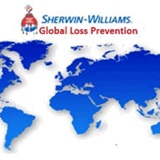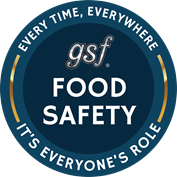Information
-
Client / Site
-
Conducted on
-
Prepared by
Facility Structure
-
1. Are the ceilings free of flaking paint, cracks, excessive soils, holes, unsealed openings, water damage, leaks, loose caulking, missing panels?
-
2. Are the floors free of cracks, exposed aggregate, holes, broken areas, standing water? Are they smooth and easy to clean?
-
3. Are overhead surfaces (pipes, condensers, ceilings), free of dust, mold, rust, peeling paint, leakage?
-
4. Are floor/wall junctions properly sealed with no loose or missing caulking? Is there flaking paint on the coving? Is the coving clean and free of mold?
-
5. Are there cracks/crevices in the wall which could harbor pests, water, debris? Are wall clean, free of mold, rust, condensation, flaking paint? Are there exposed rusty nails, screws, staples, bolts?
-
6. Is pipe insulation intact, clean & free of mold?
-
7. Are floor drains clean & functioning properly? Are drain covers easily removable?
-
8. Do all lights have protective coverings which are clean, intact, & free of moisture?
-
9. Are all water lines protected against backflow or siphonage?
-
10. Are there any leaking water sources or sink drains?
-
11. Are fans, vents, cooling units clean & in good repair?
-
12. Are exterior doors properly sealed & in good repair?
-
13. Are cooler/freezer doors properly closed, accessible, functioning?
-
14. Do all areas have adequate lighting?
Temperature & Environment
-
15. Is there a written pest control policy that is reviewed regularly?
-
16. Are pest traps present & free of damage on both sides of exterior doors?
-
17. Are ILTs properly placed & functioning? Are glue boards changed regularly?
-
18. Is there evidence of rodents or other pests?
-
19. Are signs & posters clean & in good repair?
-
20. Are coolers/freezers clean, dry, odor free? Is standing water or ice build-up present?
-
21. Are thermometers present, accessible, & working properly in all coolers & freezers?
-
22. Are cooler & freezer temperatures regularly monitored & documented?
-
23. Are cooler/freezer temperatures acceptable?
Sanitary Practices
-
24. Are tools stored in designated areas & not on top of equipment, electrical boxes, etc?
-
25. Are zip ties of a color that would be easily visible?
-
26. Is there any unprotected glass in the processing area?
-
27. Is there wire, tape, cardboard or string being used as a temporary fix?
-
28. Is any condensation present above product handling areas?
-
29. Are floors clean of excessive debris?
-
30. Are squeegees, mops, brushes, dustpans stored on hanging fixtures & not on floor?
-
31. Are hoses & hose nozzles stored off the floor?
-
32. Is mop water disposed of in the service sink or mop sink?
-
33. Are the dock areas clean, including around & under dock plates?
-
34. Is a written sanitation schedule present and followed daily?
-
35. Are all food contact surfaces being sanitized prior to use?
-
36. Are trash cans provided, clean & well maintained?
-
37. Are cabinets & shelving clean & organized?
-
38. Are non-food contact surfaces of equipment kept reasonably clean?
-
39. Are restrooms clean, functioning properly, with proper handwashing facilities?
-
40. Are sinks separate & properly labeled for handwashing & product wash?
-
41. Are all sanitizers (bottles, containers, sinks) of the proper concentration? Is a sanitizer log properly completed?
-
42. Are wiping cloths clean & stored in sanitizer when not in use?
-
43. Is separate floor cleaning equipment used for production & non-production areas?
-
44. Are product cooling fans clean & rust free?
-
45. Are ice machines clean inside & out, in good repair, properly plumbed with required air gap?
-
46. Are ice scoops stored in a sanitary manner?
-
47. Is equipment being fully & properly cleaned between products?
-
48. Are dishes & utensils stored in a sanitary manner to preclude contamination?
-
49. Are food contact surfaces being maintained in a clean & sanitary manner during use?
-
50. Are scales clean, balanced, & in good repair?
Production Equipment
-
51. Is equipment designed & maintained to provide easy access, disassembly & reassembly for thorough cleaning, sanitizing & inspection?
-
52. Are all pieces of equipment in good condition, rust free, free of flaking paint, sanitary, and made of food grade materials?
-
53. Is any equipment generating excess dust, debris or spillage?
-
54. Are exhaust hoods installed where required & functioning properly? Are hoods kept clean?
-
55. Is there any wooden equipment or surfaces being used (other than those allowed)?
-
56. Is there unused equipment &/or utensils cluttering work spaces?
Product & Process Control
-
57. Are Food Manager Certificates available?
-
58. Are chemical properly labeled and stored away from processing area? Are MSDS available for all chemicals?
-
59. Are adequate precautions followed to reduce or eliminate allergen cross-contamination between ingredients?
-
60. Is the condition/date/temperature of incoming good inspected upon receipt? Is unacceptable product rejected?
-
61. Are all ingredients clearly marked with the date received (m/d/y)?
-
62. Are ingredients properly covered, labeled & stored to prevent contamination?
-
63. Is proper ingredient rotation (FIFO) observed? Are there outdated ingredients present?
-
64. are packaging materials & supplies properly stored to prevent contamination? Are such materials stored 6" off the floor at all times?
-
65. Is product being kept from contacting non-product contact surfaces?
-
66. Are check weights performed & documented? Do final product weights comply with weights listed on labels?
-
67. Are metal detector calibrations performed as scheduled & documented properly?
-
68. Is metal detection performed & documented properly? Are rejects handled & documented properly?
-
69. Are finished products properly labeled? Are labels legible? Is automatic labeling equipment working properly?
-
70. Are finished products properly covered, labeled & stored to prevent contamination?
-
71. Is there evidence of temperature abuse on refrigerated or frozen products (excessive ice, discoloration, etc)?
-
72. Are finished products containing nuts segregated from other products?
Personal Hygiene & Operational Practices
-
73. Are employees wearing the required uniform & maintaining them in a clean & sanitary manner?
-
74. Are non-production personnel properly dressed? Are unauthorized personnel restricted from product handling areas?
-
75. Are employee handwash areas clean, accessible, supplied with soap, towels, nailbrushes & garbage receptacles?
-
76. Are employees following proper handwashing procedures?
-
77. Are employees wearing jewelry, nail polish, false fingernails, eating or chewing gum in processing areas?
-
78. Are all bandages & open cuts properly covered?
-
79. Are employee personal item present in production areas?
-
80. Is eating & drinking (except water) restricted from production areas?
-
81. Do personal water containers meet GMP requirements - nonbreakable, with secure top that precludes hand-to-mouth transfer?
-
82. Are gloves worn when handling finished product?
-
83. Are hand sanitizer stations present at convenient locations & properly stocked?
-
84. Are hands & gloves being sanitized prior to handling finished products?












